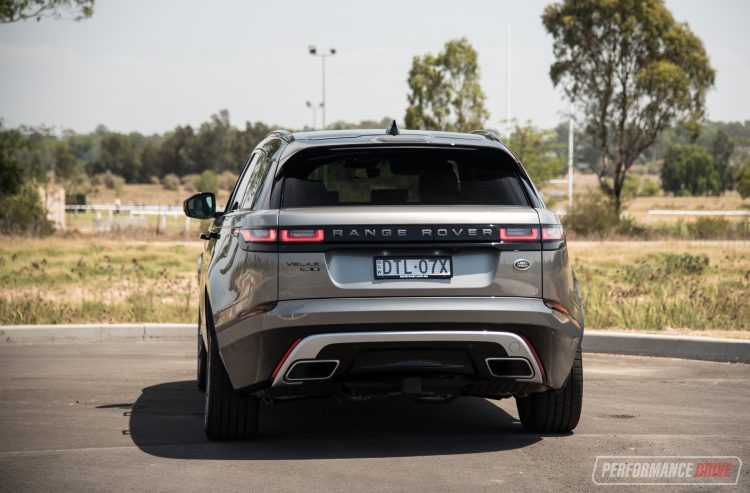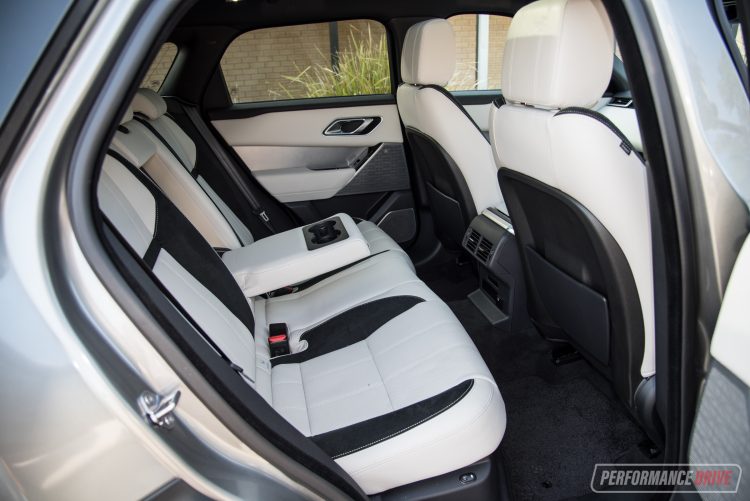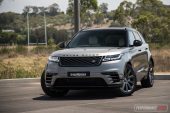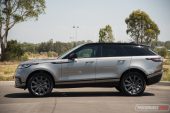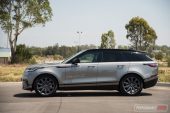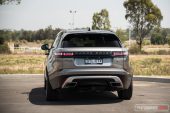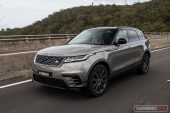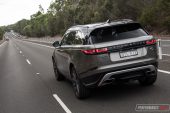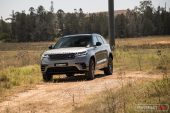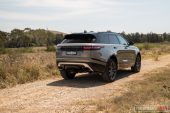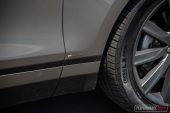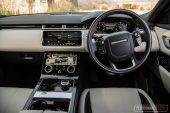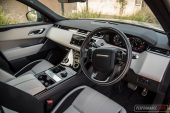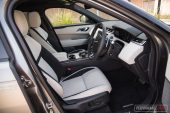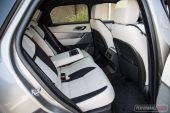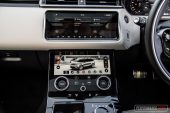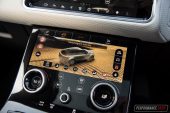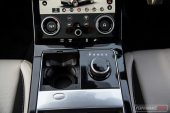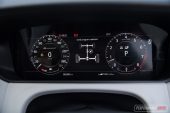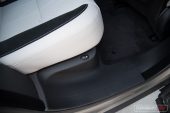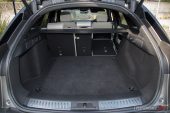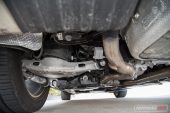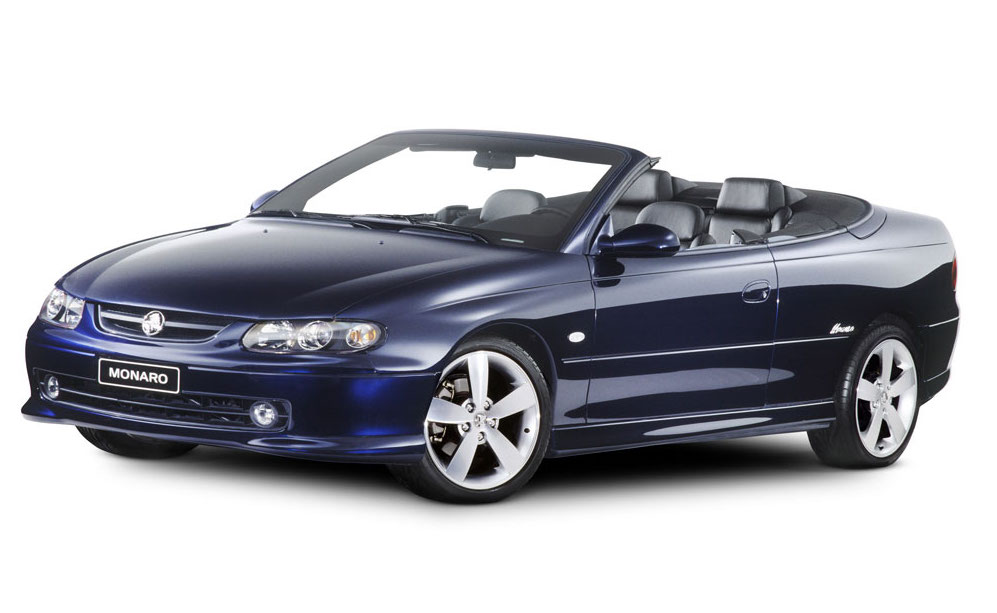Welcome to Range Rover’s new mid-sizer, the Velar. It shares a lot with the Jaguar F-pace but arguably looks even better. The question is though, is it a real Range Rover?
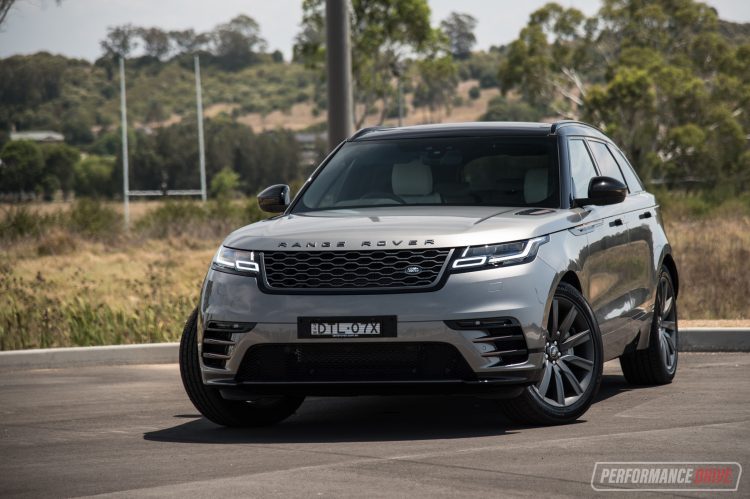
Well, the name harks back to the very first Range Rover pre-production models of the late 1960s which were codenamed Velar. And although the name originally stood for the last word in large SUV luxury and utility, this modern interpretation slots neatly in between the Evoque and the Range Rover Sport, in the medium-size premium SUV class. Rivals include the Audi Q5, BMW X3, and Mercedes GLC.
Unlike the Evoque, the Velar is based on the larger and newer JLR ‘iQ[Al]’ platform which supports a longitudinal powertrain layout. This means it’s available with big powerful engines. You can get a range of turbocharged petrol and diesel four-cylinder units, or you can opt for a 221kW and 700Nm twin-turbo V6 diesel. Perhaps more enticingly, there’s also a 3.0-litre supercharged V6 petrol that produces 280kW.
Today we’re testing the latter option which is called the P380 (relating to metric horsepower), in R-Dynamic SE trim. Prices start at $119,462 for this, plus another circa-$15k for options ($135,812, as tested). You can get into a Velar from $70,662 though if you just want the bare bones, which, fortunately, includes the beautiful exterior and interior.
2018 Range Rover Velar P380 R-Dynamic SE – THE SPECS
[column width=”47%” padding=”6%”]Engine: 3.0-litre supercharged V6
Output: 280kW@6500rpm / 450Nm@3500-5000rpm
Transmission: Eight-speed auto
Drive type: All-wheel drive
Wheels: F & R: 20×8.5, 255/50 (21s as tested))
ANCAP: Five stars
Tare weight: 1884kg
Power-to-weight: 6.72:1 (kg:kW)
Official fuel economy: 9.4L/100km
Economy during test: 10.2L/100km
Fuel capacity/Type: 63L/95 RON[/column] [column width=”47%” padding=”0″]Power efficiency: 29.78kW:L/100km
0-60km/h: 3.29 seconds*
0-100km/h: 6.37 seconds*
60-110km/h: 4.33 seconds*
1/8 mile: 9.67 seconds at 128.6km/h*
1/4 mile: 14.58 seconds at 159.8km/h*
Max acceleration: 0.672g
100-0km/h braking: 3.09 seconds at 40.31 metres*
Max deceleration: -1.172g
Decibel at idle: 41*
Peak decibel at 60-100km/h: 84*
Priced from: $119,462[/column][end_columns]
* Figures as tested by PerformanceDrive on the day. Factory claims may be different
2018 Range Rover Velar P380 R-Dynamic SE – THE PACKAGE
Opening the door on the Velar should be accompanied by an automatic prompt of classical music. Diamond-etched leather is enswathed across the dash for instant wow factor, with soft metallic trimming gracefully highlighting the boarders of most fixtures – even the steering wheel rim is encrusted with a metallic pinstripe. The centre stack is a masterpiece in design, beautifully infusing technology and elegance with its seamless screen integrated into the console.
Take a second look at the temp controls and you’ll notice they feature little windows that give you a fish-tank view over the screen below. This display changes too, from being a toggle for the driving modes to adjusting the temperature. To your side, the door panels are exquisitely decorated with brushed stainless-steel-like panels that provide a backboard for the indented rest for your arm to slot into.
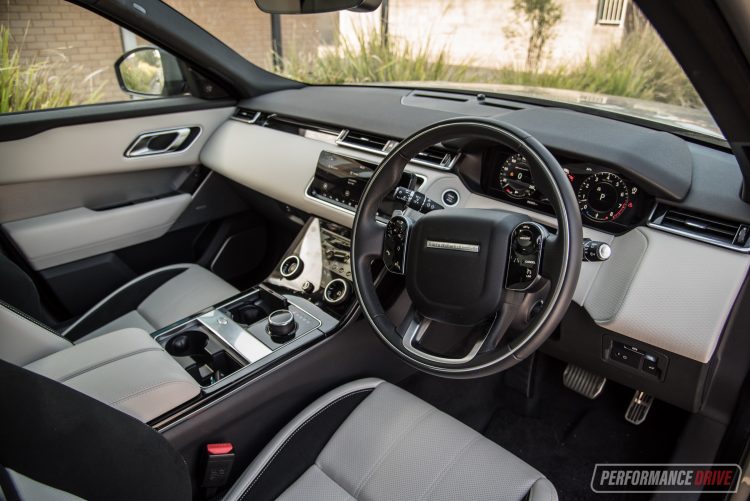
Using twin screens – called Touch Pro Duo – might seem complex at first, but they are actually quite intuitive once you play around with them for a few minutes. And the graphics are pin-sharp, with colourful displays really animating the dash. We love selecting between the different drive modes to see the different images that represent the Velar in corresponding surroundings. It’s all very cool.
As for the comfort and space, well, we can confirm this really is a Range Rover on that front. There are no fold-down armrests like on the bigger models, but that’s probably a good thing as some hallmarks should be reserved for the flagship models we think. However, the big, cushy front chairs are captain-worthy, with soft leather making them feel and smell genuinely prestigious.
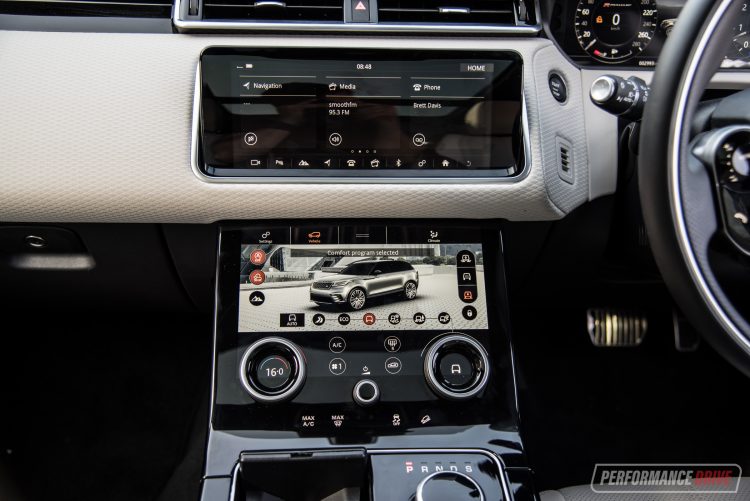
You won’t be complaining about headroom or legroom in the front, and those after a high-riding seating position will be satisfied with the Velar; you can proudly tower over the surrounding, lesser fortunate motorists. All D300 and P380 Velar models in Australia come with height adjustable air suspension too (optional on all others), so you can raise the entire vehicle up if you’re not feeling imperious enough.
Rear seat comfort is outstanding for this class. When you think about some of the boring rivals, this thing really is in a different league. For starters, there’s a huge range of colour and trim combinations that can really brighten up the atmosphere. Secondly, the backrest can be reclined at the touch of a button. Legroom is plentiful and headroom is no issue, especially with the seat reclined a little. And this is despite featuring a sporty four-door coupe-like exterior profile. Right up the back you have a sizeable boot, measuring 673L/1731L.
2018 Range Rover Velar P380 R-Dynamic SE – THE DRIVE
The first thing we notice about the way the Velar drives is the solidity. It feels bulky and sturdy, even before you set off. This is much like the larger models and in our opinion makes it feel like a proper Range Rover. Sure, it can seem difficult to manage in tight car parks, on first impressions, but the actual external dimensions aren’t all that intimidating and you soon realise it’s pretty easy to thread into tight areas.
Out on the road it feels commanding and majestic, with ultra-smooth highway cruising ability. This is enhanced by the air suspension which provides a superbly plush and absorbent ride. Flicking the suspension to its higher ride height setting is perfect for rougher roads and those pesky speed bumps in car parks, as it offers a long compression range.
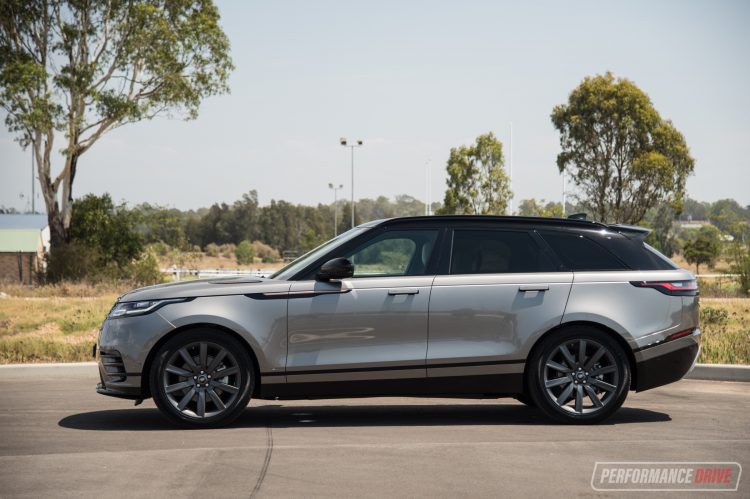
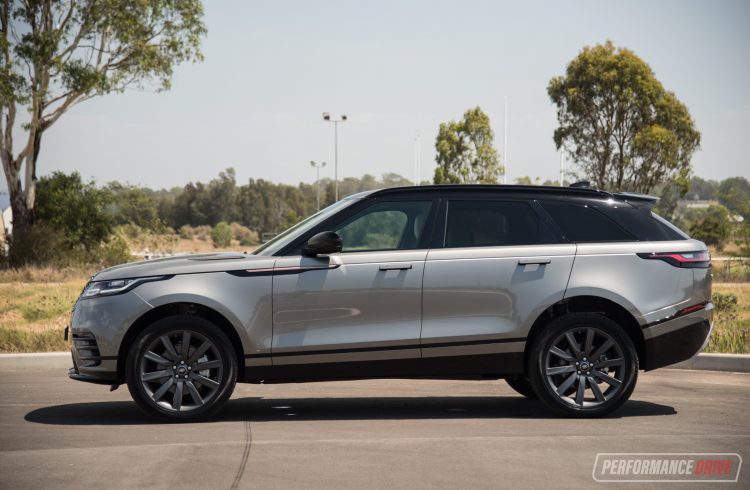
Down on the centre console you have five different driving modes to select from. In normal/automatic mode the car will determine what setting is best for the prevailing conditions, so you don’t have to touch anything. But, if you encounter some sand, for instance, you can manually select the sand mode which locks the centre differential for improved traction. During our test we found the Velar to be more than capable enough to reset the benchmark for off-road capability in this class.
In the bends, on the other hand, you can flick it into Dynamic mode for a more sporty experience. The suspension hunkers down, the throttle response is sharpened up, and the steering feel becomes more wholesome. It handles quite good. We wouldn’t say it’s the best handling SUV in the class but it is very enjoyable on a nice road. The steering is communicative and the aluminium-intensive chassis feels taut and confident. About the only downside is the weight. Or, actually, it’s the feeling of weight.
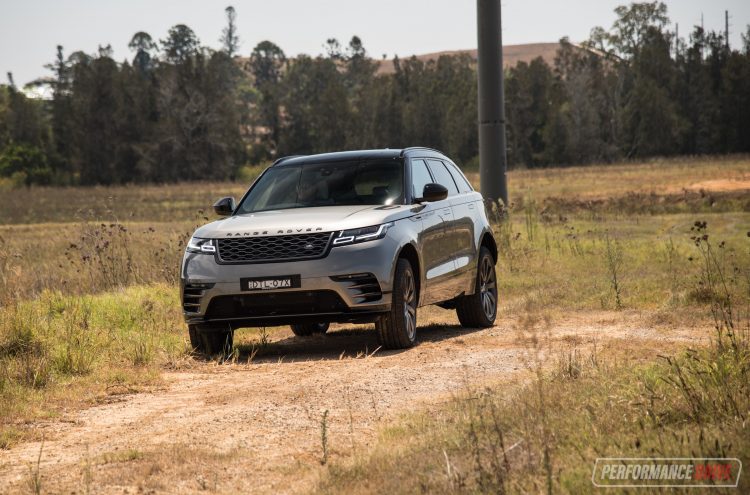
Like the bigger Range Rover models, the Velar provides a solid stance on the road. And some of that firm and planted feeling is associated with weight. At 1884kg, it’s not the heaviest model in the class but it does feel pretty hefty behind the wheel. However, tossing it between switchbacks, through energetic twists and turns, it doesn’t seem like it’s worried. Perhaps more importantly, your confidence behind the wheel remains strong; you’re simply aware there is some heavy-duty running gear and weight underneath it all.
As for that P380 engine. It’s a crisp, responsive, and rather vocal unit that offers more than enough forward thrust. It’s a 3.0-litre supercharged V6 producing 280kW at 6500rpm, and 450Nm from 3500-5000rpm. This is the same engine found in the Jaguar F-Type S sports car, and it seems to fit in well for SUV applications such as this. Thanks to the supercharger, low-down oomph is strong so there’s no trouble getting off the line or overtaking. And as you may have noticed, peak power isn’t reached until an exciting 6500rpm, which is pretty high for an SUV.
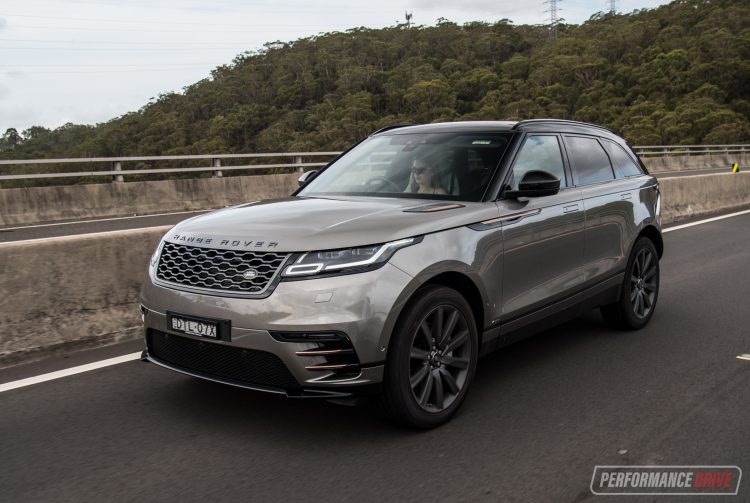
All of this is channelled through the brilliant ZF-based eight-speed automatic transmission. You can use the paddle shifters for instant command over ratio changes, or you can leave it in S mode to let it sort out a sporty tempo for you. Leaving it in the default D position provides a good balance, and it won’t upshift too early into higher gears like some JLR models (particularly the four-cylinder ones). Flat out through the gears we timed a best 0-100km/h in 6.37 seconds and the quarter mile in an impressive 14.58 seconds.
2018 Range Rover Velar P380 R-Dynamic SE – THE VIDEO
2018 Range Rover Velar P380 R-Dynamic SE – THE VERDICT
If you haven’t noticed, we really love the Velar. It’s not just a beautiful design, which is deserving of its own award as it is, we love the way it drives; the solid, reassuring and quintessentially British feel on the road. And we love the technology and the elegant way that it’s integrated. This is a vehicle we’d love to take on many long journeys. It’s pleasant and very relaxing, as well as capable in all conditions. It’s also quite quick in P380 form.
About the only problem with buying the Velar is choosing the right variant. Range Rover offers a mind-exploding 50 different main variants; spanning from D180, D240, D300, P250, P300, to P380 – outlining the engine – and then there’s R-Dynamic or not, and then S, SE, and HSE for each of these. It’s a bit ridiculous. But hey, if your neighbour buys one too at least it won’t (likely) be the same spec as yours.
[column width=”47%” padding=”6%”]PROS:
– Proper Range Rover feel behind the wheel
– Elegantly integrated technology
– Class-leading design, inside and out
– P380 provides plenty of poke
– Real off-road capability (unlike most rivals)
[/column] [column width=”47%” padding=”0″]CONS:
– Lots of options, can get very expensive (for class)
– Over 50 different variants to choose from[/column][end_columns]
As always, if you’re thinking about buying a new car don’t forget to click here to speak with our car buying specialists.
